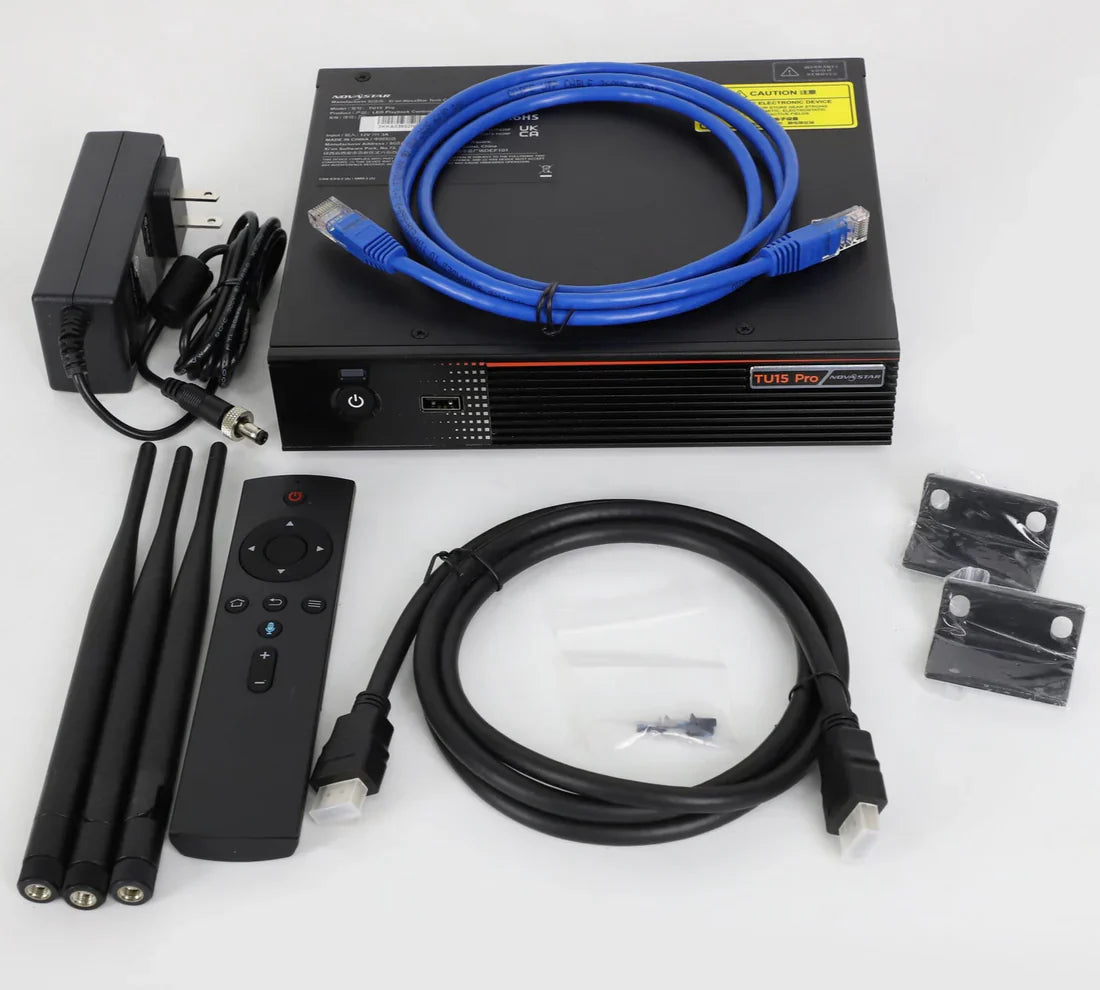With the development of LED display technology, LED video walls have evolved from simple information display tools into essential platforms for stage performances, control room monitoring, commercial advertising, and even smart city information screens. In this process, the LED Video Processor has become a core device to ensure smooth display, precise image processing, and excellent visual experience. This article will systematically analyze the use and selection of LED video processors from three perspectives: technical principles, application scenarios, and product selection.
1. Core Functions of LED Video Processors
LED video processors are essentially the “brain” of an LED display system. They perform the following key functions:
-
Signal Management and Switching
Video processors can receive multiple video inputs (such as HDMI, DVI, VGA) and distribute signals to different areas of the LED display, supporting seamless switching.
For example, the NovaStar VX1000 provides HDMI ×1 and DVI ×1 inputs, as well as 10 Ethernet output ports. It supports 4K resolution, seamless switching, and multi-layer processing, making it ideal for stage or commercial environments requiring high resolution and layered displays. -
Resolution and Scaling Adjustment
Video sources may come from devices with different resolutions. The processor needs to scale the signal to the optimal resolution of the LED screen to ensure the image remains undistorted.
The ColorLight X20 supports 1920×1200 resolution and dual image processing with flexible layout, making it suitable for medium-sized LED wall projects. -
Synchronous and Asynchronous Control
In large-scale scenarios, multi-screen splicing or asynchronous playback may be required. The processor ensures that all screens display in sync or according to a preset mode.
The Huidu VP210 supports both asynchronous and synchronous display, as well as basic scaling functions, suitable for simple or small-to-medium projects. -
Real-Time Image Adjustment and Optimization
This includes brightness, contrast, and color correction. High-end processors such as the NovaStar VX2000 Pro can support up to 13 million pixels of loading capacity, ensuring fine, smooth images on large LED walls.
2. Processor Selection Based on Application Scenarios
When choosing an LED video processor, the actual application scenario should be considered. Here are some common scenarios:
1. Stage Performances and Concerts
Stage performances require LED walls to support multiple signal sources, 4K resolution, seamless switching, and multi-layer effects. Recommended high-end models include:
These processors provide rich input interfaces and multi-layer processing capabilities, ensuring stable performance on large spliced screens.
2. Control Rooms and Command Centers
Control rooms require stable, high-definition, and real-time display for monitoring and decision-making. Suitable models with high reliability include:
The TU series provides intelligent playback control and multi-channel output, meeting high demands for real-time and stable display in control rooms.
3. Commercial Advertising and Exhibitions
Commercial LED screens mainly require flexible layout, asynchronous playback, and multi-resolution compatibility. Mid-range processors like Huidu VP210 or ColorLight X20 are recommended to balance cost and functionality.
These models support flexible image splicing and layout adjustment, allowing quick deployment and content updates in shopping malls and exhibition halls.
3. How to Choose the Right LED Video Processor
When selecting a video processor, consider the following dimensions:
-
Number of Input and Output Ports
Choose a processor with input ports matching the number of signal sources. The number of output ports determines how many LED modules and screen zones can be connected. -
Supported Maximum Resolution
For stage performances or high-end commercial displays, 4K or higher is recommended; for control rooms or small-to-medium advertising screens, 1080P or 1920×1200 may suffice. -
Image Processing Features
Including multi-layer overlay, scaling, seamless switching, and color correction. High-end processors provide richer processing capabilities for fine image quality and layered depth. -
Synchronous/Asynchronous Playback Capabilities
Large LED walls or multi-screen splicing projects require precise synchronous display. Independent small screens or distributed advertising screens may only require asynchronous playback. -
Brand and After-Sales Support
NovaStar, ColorLight, and Huidu are mature brands in the industry, providing stable hardware and software support, making future upgrades and maintenance easier.
4. LED Video Processor Product Comparison Table
| Brand | Model | Key Features |
|---|---|---|
| NovaStar | VX1000 | 4K scaling, multi-layer overlay, seamless switching |
| NovaStar | VX2000 Pro | High pixel loading, multi-layer processing, real-time optimization |
| NovaStar | VX400 | Multiple input switching, high stability |
| NovaStar | VX600 | High reliability, flexible layout |
| NovaStar | TU20 Pro | Intelligent playback control, multi-channel output |
| NovaStar | TU15 Pro | Flexible layout, asynchronous playback |
| ColorLight | X20 | Dual image processing, flexible layout |
| Huidu | VP210 | Asynchronous + synchronous, basic scaling |
Conclusion
LED video processors are the core devices for improving the performance of LED video walls. Choosing the right processor ensures smooth playback, accurate color, and stable display. Whether for stage performances, commercial advertising, or control room applications, understanding the characteristics and functions of each model is key to successfully deploying an LED display system. We hope this analysis provides practical guidance for selecting and using LED video processors.

